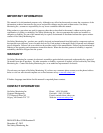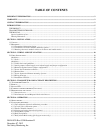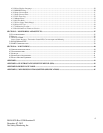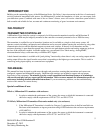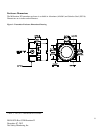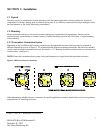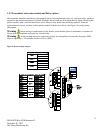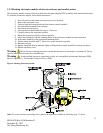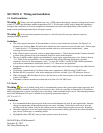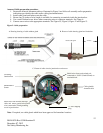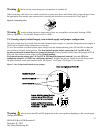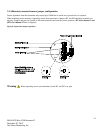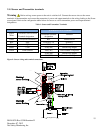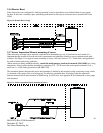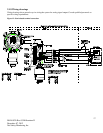
10
MAN-0076 Rev 05 Millennium II
December 07, 2012
Net Safety Monitoring Inc
SECTION 2: Wiring and installation
2.1 Field Installation
Warning Wiring codes and regulations may vary. ATEX requires that supply connection wiring must be rated
at least 5°C above the maximum ambient temperature of 85°C. Wiring must comply with all applicable regulations
relating to the installation of electrical equipment in a hazardous area and is the responsibility of the installer. If in
doubt, consult qualified personnel before wiring the system.
Warning Do not open the transmitter enclosure in a classified area (Do not open when an explosive
atmosphere may be present).
Guidelines
The safety ground connection of the transmitter is a Green screw found in the enclosure. See Figure 4 for
Ground screw location. Note: The electronics module has to be removed to access Ground screw. Follow steps
1-7 under Section ‘1.2.3 Rotating electronics module relative to enclosure and conduit entries’, when
removing electronics module.
If the 4-20mA signal is not used, connect a jumper between the 4 – 20mA terminal and the Common terminal
to allow analog current levels to be monitored at the Test Jacks on the faceplate.
The use of shielded cable is highly recommended for signal, input, output and power wires. Refer to Section
‘2.1.2 Cable choice and guidelines’ for recommended cable to help eliminate interference caused by
extraneous electrical or electromagnetic ‘noise’. To meet IEC 61000-1 and IEC 61000-4 EMI requirements,
follow the recommendations listed under Section ‘2.1.2 Cable choice and guidelines’.
In applications where wiring is installed in conduit, conduit must not be used for wiring to any other electrical
equipment.
For effective communication, Net Safety limits sensor separation to 2000 feet using 16AWG wires.
Modbus RS-485 connection 2-wire mode, multipoint serial line available. Up to 247 addresses allowed.
When developing a RS-485 chain of devices, the last device in the chain requires an end of line termination
resistor (120 Ohms).
Transmitter connector terminals accommodate wire from 14 to 20 AWG wires.
2.1.1 Seals
Warning The use of conduit wiring seals is recommended to protect the system against water ingression, and
equipment should be installed according to local electrical codes. Seals are especially recommended for installations
that use high-pressure or steam cleaning devices in proximity to the transmitter and/or sensor. The cementing material
used on the Millennium II sensors is suitable for an operating temperature range of
(-55°C to +85 °C).
Guidelines
It is recommended that explosion-proof drains and conduit breathers be used. In some applications, alternate
changes in temperature and barometric pressure can cause ‘breathing’ which allows moist air to enter and
circulate inside the conduit. Joints in the conduit system are seldom tight enough to prevent this ‘breathing’.
Threaded connections on the enclosure between the enclosure and conduit pipe need to be sealed with thread
tape, such as Teflon tape, or something similar.
Hydrophobic filters (IPF-001) may be used to protect sensors from water.



